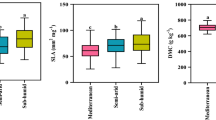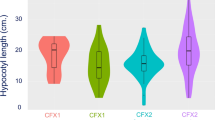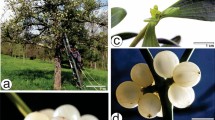Abstract
ALTHOUGH occasional protests have been made by plant morphologists for many years against the inflexible framework of morphological concepts to which they have felt compelled to adhere in interpreting their experimental data, little attempt has been made to discard the defective outlook of traditional morphology in favour of something more adequate. Implicit in most botanical text-books and accepted by the majority even of research workers is the notion that morphology consists largely of the establishment of categories, such as chromosome, cell, vessel, periblem, pericycle, root, stem, leaf and stipule, into which all the diversity of plant structure has to be forced ; and structures as dissimilar as cotyledons, stamens and carpels, which happen to fall in the same pigeon-hole, in this case labeled 'leaf', are then described as related by the bond of 'homology'.
This is a preview of subscription content, access via your institution
Access options
Subscribe to this journal
Receive 51 print issues and online access
$199.00 per year
only $3.90 per issue
Buy this article
- Purchase on SpringerLink
- Instant access to full article PDF
Prices may be subject to local taxes which are calculated during checkout
Similar content being viewed by others
References
Owen, R., "On the Archetype and Homologies of the Vertebrate Skeleton" (London, 1848).
Bower, F. O., Ann. Bot., 1, 133 (1887).
Goebel, K., "Organographie der Pflanzen" (1898).
Arber, A., New Phyt., 32, 231 (1933).
Thomas, H., Hamshaw, Proc. Linn. Soc. Lond., 145, 17 (1933).
Thompson, J., McLean, Pub. Hartley Bot. Lab., No. 12 (1934).
Goethe, J. W. von, "Versuch die Metamorphose der Pflanzen zu erklären" (1790).
Thomas, H., Hamshaw, New Phyt., 33, 173 (1934).
Gregoire, V., Rec. trav. bot. neerland., 32, 453 (1935).
ÄŒelakovský, L. J., Bot. Z., 59, 79 (1901).
Potonié, H., Ber. dtsch. bot. Ges., 20, 502 (1902).
Saunders, E. R., Ann. Bot., 36, 135 (1922).
Thomas, H., Hamshaw, New Phyt., 34, 113 (1935).
Thompson, J., McLean, New Phyt., 33, 306 (1934).
Saunders, E. R., Amer. J. Bot., 16, 122 (1929).
Saunders, E. R., New Phyt., 31, 174 (1932).
Eames, A. J., and Wilson, C. L., Amer. J. Bot., 15, 251 (1928).
Eames, A. J., and Wilson, C. L., Amer. J. Bot., 17, 638 (1930).
Author information
Authors and Affiliations
Rights and permissions
About this article
Cite this article
RICHENS, R. RELATIONAL PLANT MORPHOLOGY. Nature 157, 127–128 (1946). https://doi.org/10.1038/157127a0
Issue date:
DOI: https://doi.org/10.1038/157127a0



